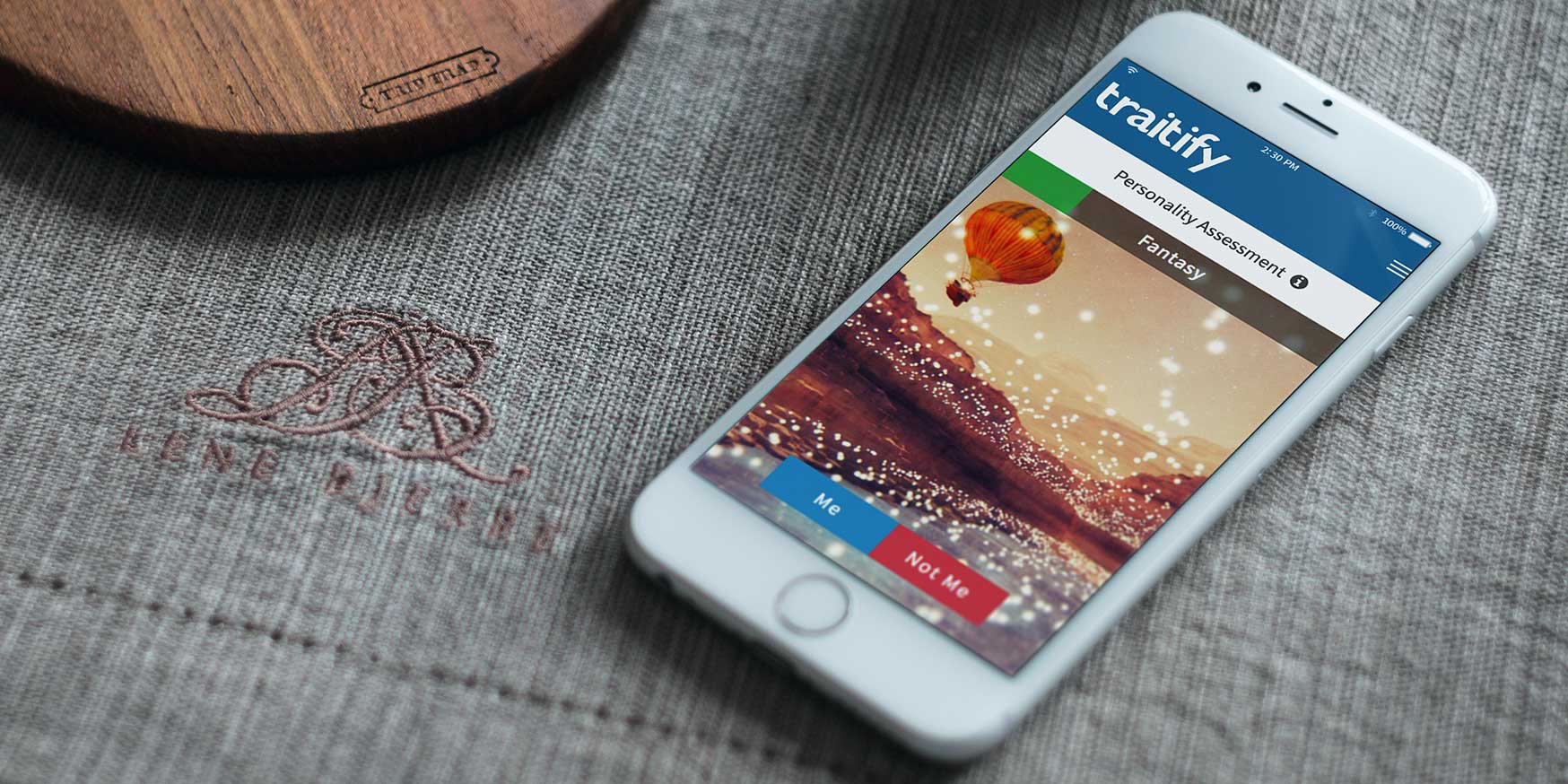For software companies of all shapes, sizes, and missions, accessibility has long been a "checkbox" on a long list of requirements; necessary, but more often than not, forgotten. WCAG audits are conducted to ensure that software is compliant and defensible. What would happen if we began to look at accessibility as a feature—an aspect of our products that enhances our experiences and delights our users?
Accessibility has been at the forefront of the Traitify mission from inception. Imagine the first Traitify team members sitting around a former auto repair garage (cliche but accurate) and dreaming of how we could make knowledge of understanding accessible to all people without requiring massive time commitments and a doctorate to understand the results of an assessment. I know this is not how accessibility is typically viewed. Our industry and I dare say the world as a whole tends to paint "accessibility" into a tiny box of requirements. Still, for us, those requirements were only a jumping-off point, necessary and crucial, but only a fragment of what we could offer.
Since 2011, the percentage of Americans  who own a smartphone has increased 35% to over 85%, while desktop computer ownership has remained relatively flat. As ownership has grown, so too has our usage of phones to conduct important life behaviors, including communication, shopping, and yes, applying for jobs.
who own a smartphone has increased 35% to over 85%, while desktop computer ownership has remained relatively flat. As ownership has grown, so too has our usage of phones to conduct important life behaviors, including communication, shopping, and yes, applying for jobs.
According to Appcast's 2021 Recruitment Marketing Benchmark Report, applications completed using a mobile device surpassed desktop applications for the first time in 2020. However, while candidates have increased mobile devices’ usage to complete applications, "Mobile job seekers successfully complete applications 53 percent less often and each completed application takes 80 percent longer than for desktop job seekers," according to Daniel Zhao, Senior Economist and Data Scientist at Glassdoor.
The data shows that while users have increased their ownership and usage of mobile devices, user experiences and, more specifically, candidate experiences have stagnated, and the experiences created have become less accessible.
 If you're reading this post, you most likely know about our 90-second, visual-based assessments and how they're revolutionizing candidate and employee engagement with personality data. You may have even read how we support candidates using screen readers to engage with our assessments. What you may not know is that the question of accessibility for us is ongoing. With each product we build, we consider each candidate, manager, and employee who may one day interact with our solutions, and we strive to ensure that their experience is magical and accessible no matter what their circumstances.
If you're reading this post, you most likely know about our 90-second, visual-based assessments and how they're revolutionizing candidate and employee engagement with personality data. You may have even read how we support candidates using screen readers to engage with our assessments. What you may not know is that the question of accessibility for us is ongoing. With each product we build, we consider each candidate, manager, and employee who may one day interact with our solutions, and we strive to ensure that their experience is magical and accessible no matter what their circumstances.
From the start, we’ve designed and built our products to be mobile first, meaning that regardless of device, our experiences are optimized and accessible to all users. Optimizing for mobile does not simply mean making everything fit on a mobile screen, but instead audits the experience from the mobile perspective. Take for example our process of selecting images for our Big Five and Career Interest Assessments. The Traitify team has taken special care to analyze images across a multitude of screen resolutions to guarantee that every user is seeing the focal point of the image. This intentionality extends to our assessment output as well, where our designers architect assessment reports to be easily consumable on any screen size.
Accessibility is top of mind for all products we develop, including those that are planned for future release. That’s why when developing our Cognitive Assessment, we decided to remove the time limitation. While unheard of with traditional cognitive measures, our studies found this reduced test anxiety and improved participant results while increasing the assessment’s reliability. This is also why we've decided to build an entire practice site, complete with a practice assessment for all candidates asked to take the Cognitive Assessment—giving each person a fair chance to prepare for and understand what they're being asked to do.
including those that are planned for future release. That’s why when developing our Cognitive Assessment, we decided to remove the time limitation. While unheard of with traditional cognitive measures, our studies found this reduced test anxiety and improved participant results while increasing the assessment’s reliability. This is also why we've decided to build an entire practice site, complete with a practice assessment for all candidates asked to take the Cognitive Assessment—giving each person a fair chance to prepare for and understand what they're being asked to do.
Accessibility cannot stand still; it’s a question that must be continuously re-evaluated as progress happens. It must meet the challenges of our time to advocate for the people impacted. A decade into this journey, we've made tremendous progress at Traitify for more accessible assessments—in ways never thought possible—but we won't stop building for what's next.
How can accessible assessments help you attract, select, and engage talent? We’ll tell you!





